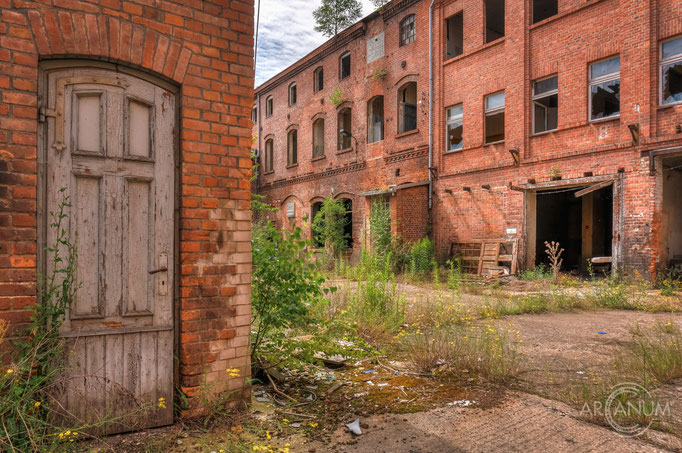Dye and Glue Factory Q.
In 1874, a German pharmacist named Wilhelm Brauns decided to produce textile colors for home use. These colors were immensely successful, so
the pharmacist left his pharmacy and started to dedicate his life to producing colors.
He moved to another city, where, together with his later partner Dr. Josef Weller, he built up an aniline dye factory.
Until after World War II, the dye business was the main business. The company supplied customers in Germany and all over the world. In 1908, the product line included dyes for textiles, leather, candles, floor wax, and soaps as well as dyes for
foods like butter, cheese, juices and liquors, but also for woodstain, moss, weeds and flowers.
The factory itself consits of a couple of old red brick buildings.In the 1920s, the company's product line was expanded to include decolorizers, stain removers, impregnation agents and similar products.
Next to this impressive product line, the company also produced flower fertilizer and hair spray.
They even produced modeling sheets and colors for easter eggs!
After World War II, not only Germany, but also the company became seperated.
In this (East german) part of the production sites, the usual product line was being kept alive on a smaller scale. After the involvement of the state in 1959 and the total nationalization in 1972, the planned economy production concentrated on adhesive agents.
But the business stagnated and the demand for products from this factory decreased.
After the German reunification, the state's escrow founded a new company which operated more or less after a fashion producing glue, before it completely vanished from the market in 2004. Since then, the factory has been abandoned.
Visited: July 3, 2014
Location: Quedlinburg, Germany
Status: Demolished


































